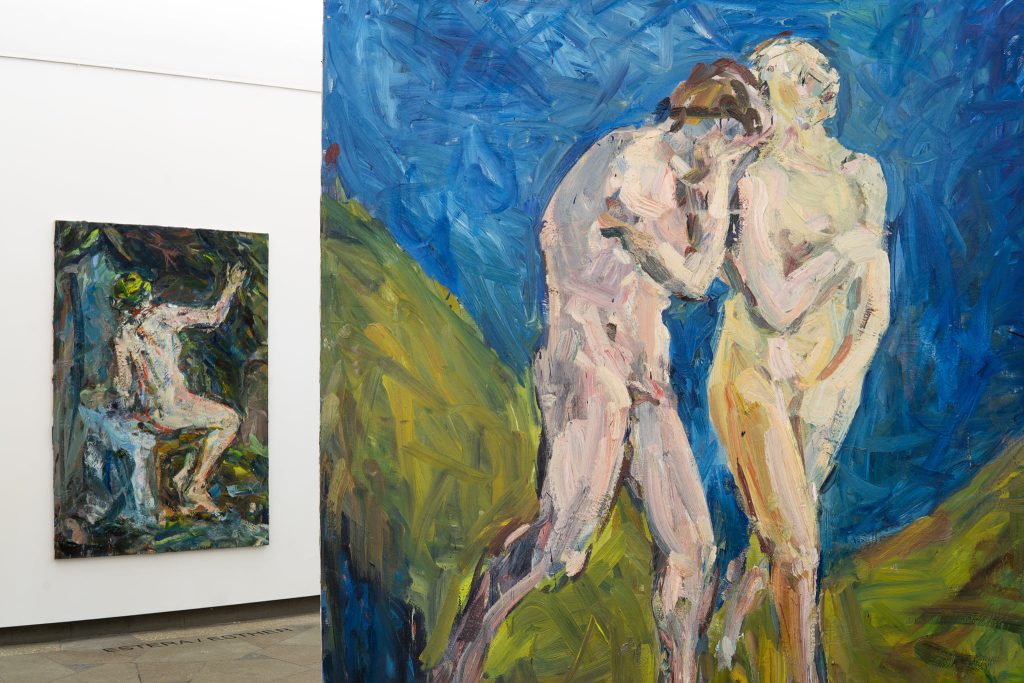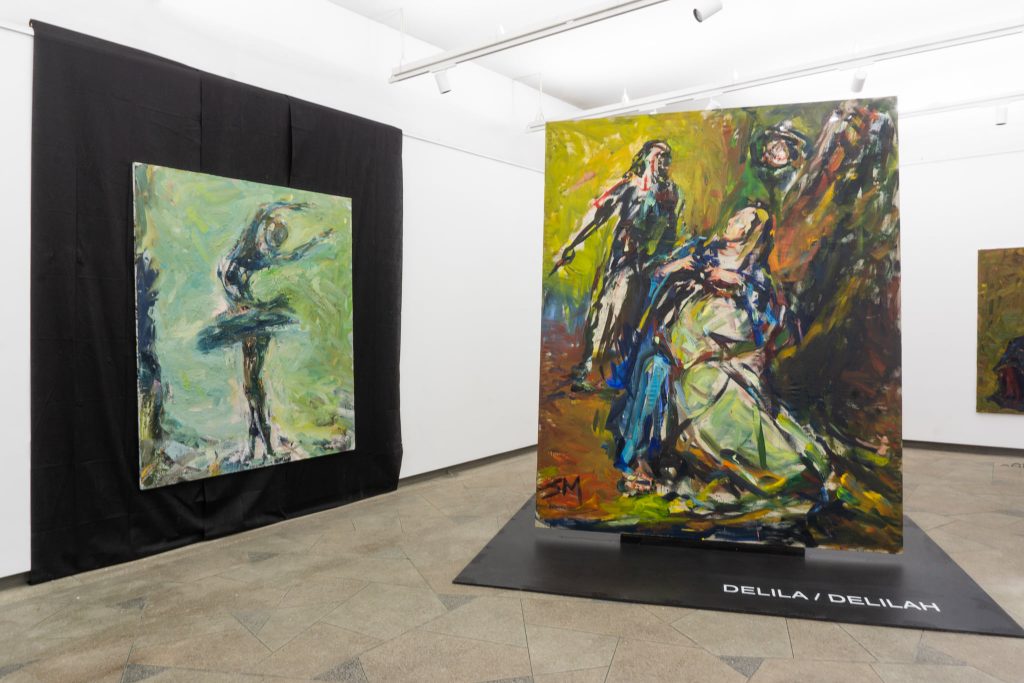04 02 2022 – 03 03 2022
The ballerina effect, or syndrome, like the butterfly effect, is a theory that the slightest change in initial conditions may have unpredictable long-term consequences.
In this exhibition, the author presents painting as a ballet performance, a canvas as an illuminated patch of the stage, on which the pointe shoes-brushes paint, jump and draw figures.
Sigita Maslauskaitė-Mažylienė: “Ballet is unimaginable without beautiful ballerinas and their graceful pointe shoes, but despite their elegant appearance, they are related to various traumas experienced by dancers. Pointe shoes, which may seem gentle and flexible at first glance, are actually incredibly sturdy. The front of the shoe is like a small box made of fabric, cardboard and paper and reinforced with glue to keep ballet dancers in balance as they move on their fingertips.
When I was little, I wanted to be a ballet dancer because my mother encouraged me and I did well in my ballet classes, but in my early teens I became involved in art and never danced ballet again. However, painter’s body, bones and sense of smell are also prone to deform. The handles of brushes abrade fingers like some finger pointe-shoes, leaving blackened nails and calluses.
The ballerina is a symbol to me: a symbol of beauty and grace on the one hand, and of ancient, somewhat boring romanticism on the other. Thus, the ballerina could also be a symbol of painting. Her image is unrelated to contemporary art: ballerinas rarely practice contemporary dance, just as painters rarely switch to contemporary art forms.
The dear visitor of the exhibition will ask: “Still, what do those figures on canvas mean? And why are there names of women in the titles?”. These are librettos of the painterly ballet. Libretto (Italian for “booklet”) is an oral text, literary text. Texts of the painterly ballet are written on the other side of the canvases and can be read. By the way, until the 17th-18th centuries the term “libretto” did not exist. The melody of an opera or ballet was created by a composer, and the words were usually adapted to music by specially hired poets. I also first paint and then apply “words” – a plot to my painting.
Art critic and poet Laima Kreivytė once said that my expression of painting does not give answers, but questions: around what tradition is the conversation evolving? What biblical story is transforming into dance? I ask these questions to myself first, but I very much hope that they will prove interesting to the spectator of the exhibition as well.”
The exhibition is supported by Lithuanian Council for Culture, Vilnius City, Lithuanian Artists’ Association. The admission is free of charge.


